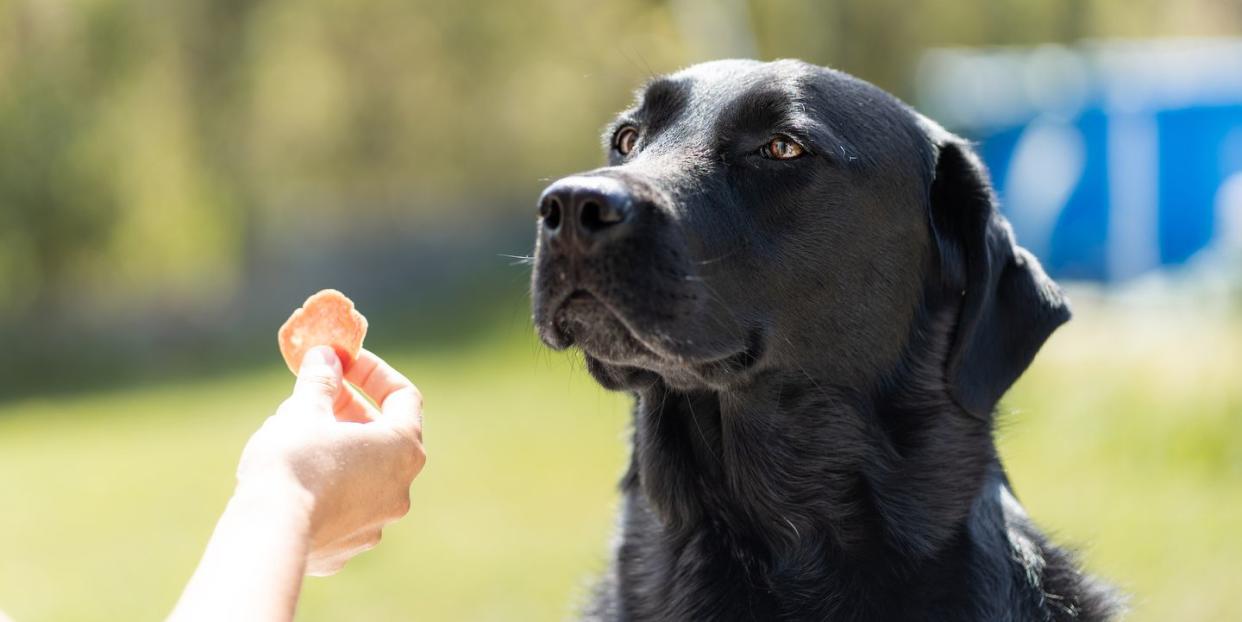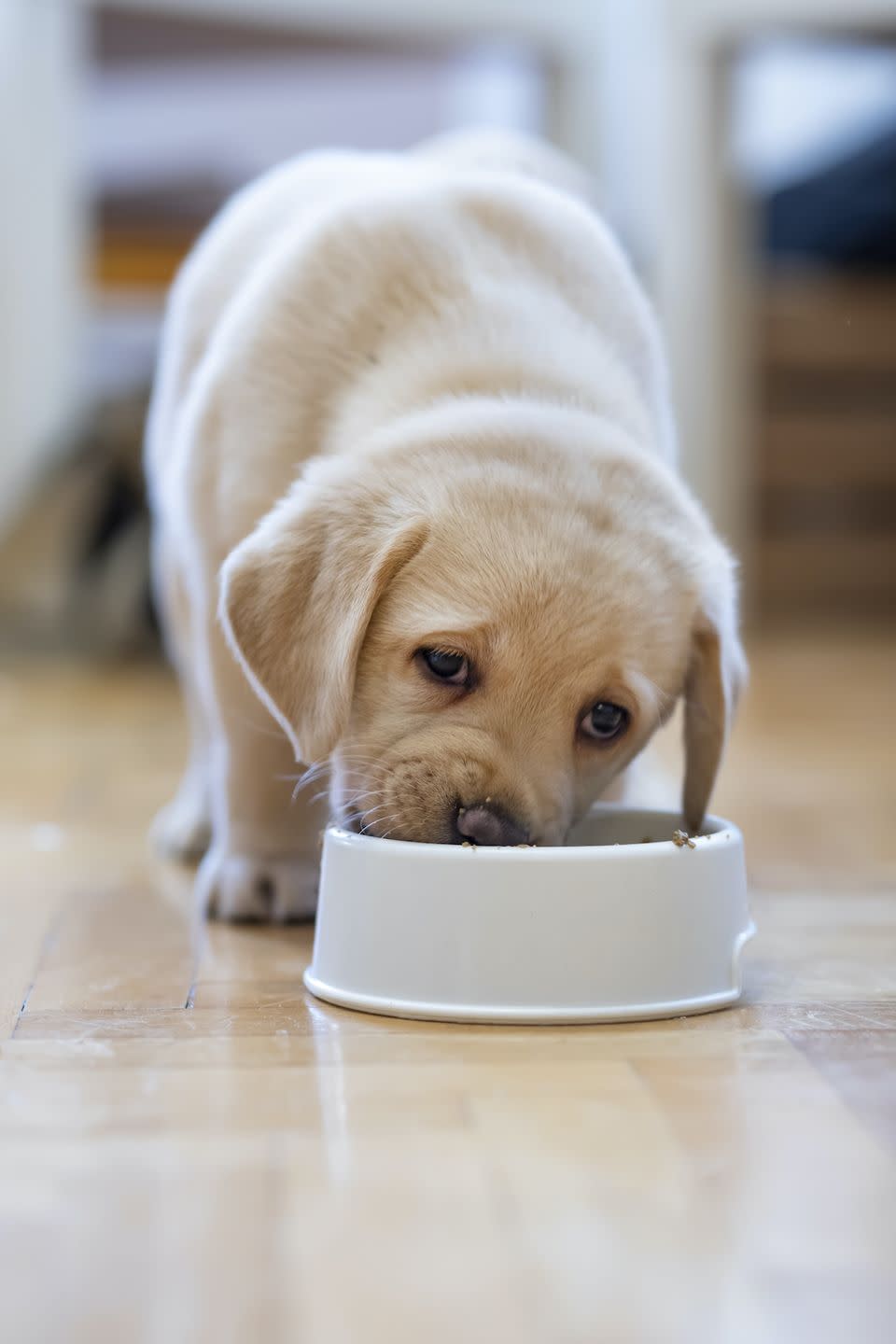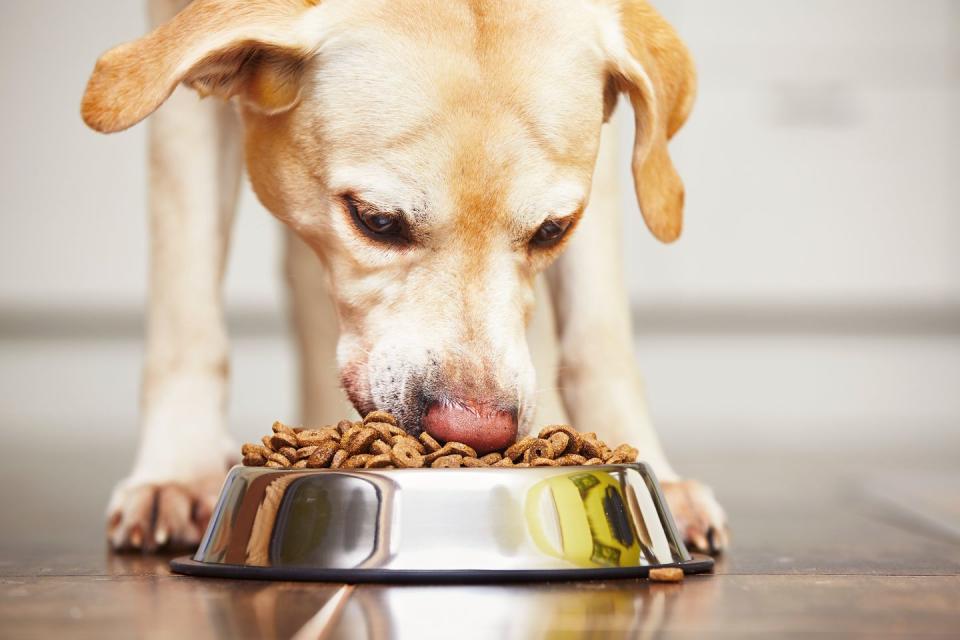How to treat obesity in Labradors: Causes, treatment and prevention

Treatment of obesity in Labradors focuses on weight loss followed by maintenance of a healthy eating plan. Obesity can affect all dog breeds, however food-loving Labradors tend to put on weight very easily.
"Labradors are well known for their hearty appetites so their owners do need to take additional steps to avoid weight gain and obesity," Shauna Walsh, PDSA Veterinary Nurse, tells Country Living. "Being a healthy weight and shape will improve a dog's quality of life and mental health, plus it can delay the onset of long-term diseases such as arthritis, and may even help them live longer."
Preventing weight gain is much easier than having to put your pet on a diet when it comes to treating obesity in Labradors. The PDSA suggest:
1. Make meal times more exciting and last longer by feeding in snuffle mats, puzzle feeders, or by encouraging foraging – if they have dry food.
2. Use healthy treats for training – chicken, turkey, or even carrots are tasty treats that aren't high in calories. Just remember to include these in their daily food allowance, treats should take up no more than 10%. Alternatively, set aside some of their daily food allowance to use as treats instead so you can be sure you aren't overfeeding them.
3. Ensure they get enough exercise. "Labradors are very high-energy breeds, they need plenty of varied exercise opportunities every day and we recommend spreading these across the day in several walks to have a good sniff around, with off-lead time and playtime on top," adds Shauna.

How to treat obesity in Labradors
The first step to treating obesity in Labradors is to recognise that they are overweight. You can do this at home – by weighing them, and by looking at their body condition. A healthy Labrador should have a weight range of 55 to 80 pounds (24-36 KG in the UK).
Take a good look and feel of your pet's body. If they are an ideal, healthy weight, you should be able to:
See their waist, from the side and above
Feel your pet's ribs when running your hands over their side
Feel the spine and hipbones (but they shouldn't be sticking out)
Feel your pet's tummy go in, not bulge out
Touch the base of your pet's tail, and there shouldn't be a build-up of fat
"If you think your pet is over or underweight based on your assessments at home, the next step is to contact your vet – they'll be able to give your pet a health check, as well as providing advice and support to help them get to the ideal weight," says Shauna.

Treating obesity in Labradors will include feeding them a bit less, avoiding fat treats and ensuring they get regular exercise. "Very overweight pets may need a special weight loss diet, as reducing their usual food too much can mean they don’t get all the other nutrients they need," explains Shauna.
If you would like to know the weight of your Labrador, pet owners across the UK are invited to join PDSA's Big Weigh In, in partnership with Royal Canin and visit a participating vet practice for a free weight check throughout March. For more information, visit pdsa.org.uk.
You Might Also Like

 Yahoo Movies
Yahoo Movies 
